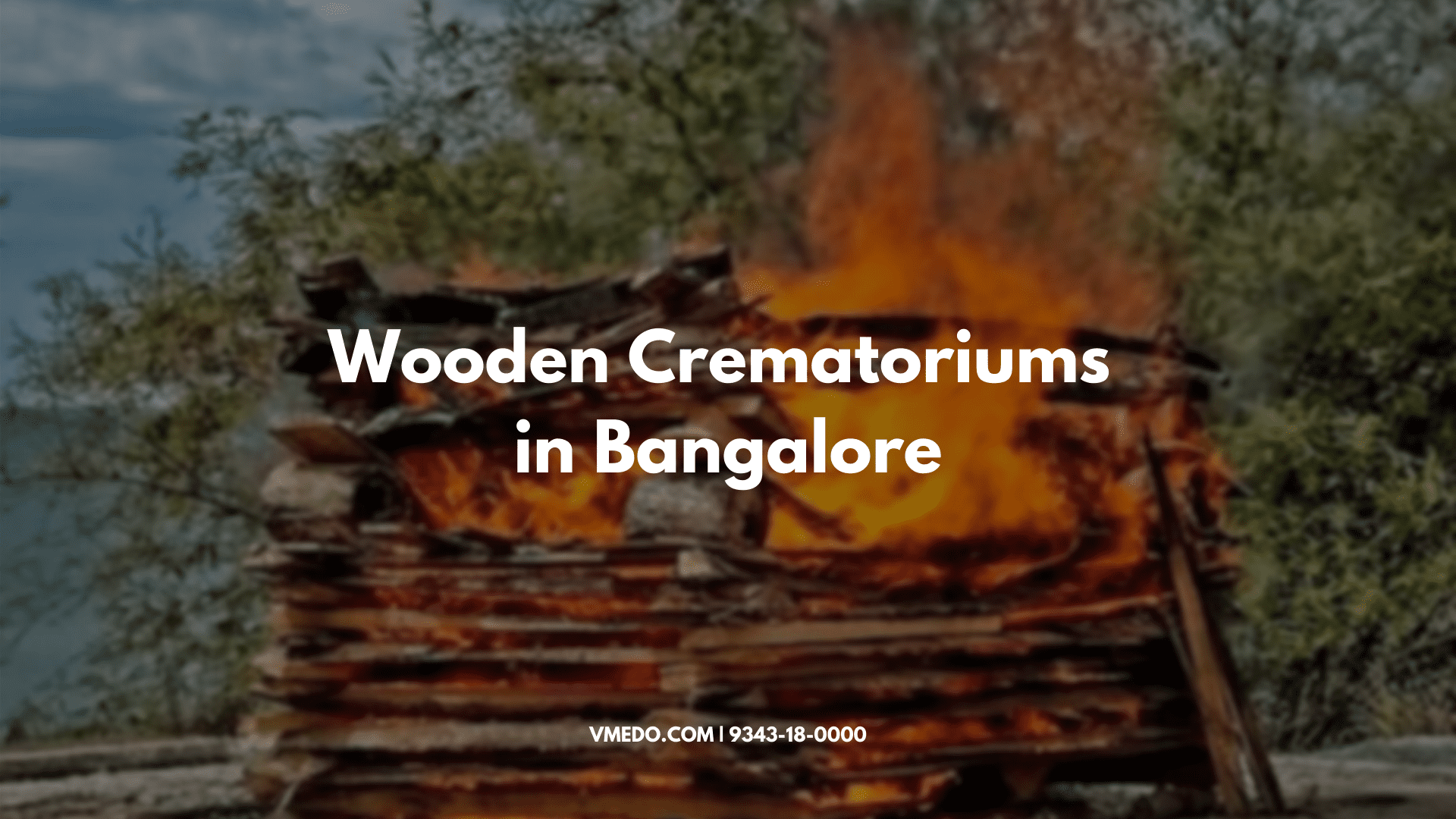As we all know Cremation is the final disposition of the body, where cremations at Wooden Crematoriums are performed as an alternative for the burial of the body which is commonly post-funeral rites that are to be performed.
Starting in the 19th century, cremation was introduced or reintroduced into other parts of the world. In modern times, cremation is commonly carried out with a closed furnace (cremator) at crematoriums.
There an increased use of Electric Crematoriums all around the world these days but there are families that still want to do it traditionally according to their religions and beliefs.
Here are some Wooden Cremation centers
| Name | Location |
| Banashankari | https://goo.gl/maps/5oKeYmCeUMCww7cc8 |
| Harishchandra Ghat | https://goo.gl/maps/jKZB3LqiKVVsHWqn7 |
| Bommanhalli | https://goo.gl/maps/v6vL8AoJD3PscVma8 |
| TR Mills | https://goo.gl/maps/4XSuyLhBp5KsYfQY9 |
| Hindu Wood Crematorium Burning Ghat | https://goo.gl/maps/ANS768YmbNd5LcHd6 |
What are Wooden Crematoriums?
Wooden Crematoriums are basically the cremation process which is done by burning the deceased with the help of firewood, cow dung cakes, kerosene, and others according to the requirements and beliefs of the relatives of the deceased.
Why Wooden Cremation?
Since Agni, the god of fire is seen as a link between the gross and subtle, matter and spirit, the seen and unseen, the known and unknown, and a messenger between men and gods, dead bodies were disposed of by cremation.
Thus, the dead body is an offering to Agni with an earnest prayer to purify and lead the individual to a better and brighter life.
Another reason for preferring cremation is to produce a feeling of detachment in the freshly disembodied subtle body and to encourage it to pass on, rather than hover around loved ones.
Moreover, Hindus, out of respect for the dead, did not want to leave the bodies around to be consumed by vultures and other animals.
Click here to read in detail about why the deceased are burnt rather than burying.
How | The Process

The last rites are usually completed within a day of death.
While practices vary among sects, generally, his or her body is washed, wrapped in white cloth, the big toes are tied together with a string, and a Tilak (red, yellow, or white mark) is placed on the forehead.
The dead adult’s body is carried to the cremation ground near a river or water, by family and friends, and placed on a pyre with feet facing south.
The eldest son, or a male mourner, or a priest – called the lead cremator or lead mourner – then bathes himself before leading the cremation ceremony.
He circumambulates the dry wood pyre with the body, says a eulogy or recites a hymn, places sesame seeds or rice in the dead person’s mouth, sprinkles the body and the pyre with ghee (clarified butter), then draws three lines signifying Yama (deity of the dead), Kala (time, a deity of cremation) and the dead.
Prior to lighting the pyre, an earthen pot is filled with water, and the lead mourner circles the body with it, before lobbing the pot over his shoulder so it breaks near the head.
Once the pyre is ablaze, the lead mourner and the closest relatives may circumambulate the burning pyre one or more times.
The ceremony is concluded by the lead cremator, during the ritual, is kapala kriya, or the ritual of piercing the burning skull with a stave (bamboo fire poker) to make a hole or break it, in order to release the spirit.
What does it take to Wooden Crematoriums?
Traditional pyre requires about 500-600kgs of firewood which is being eliminated by the process of Electric crematorium.
2-3 liters of kerosene which shall ignite the fire shall also be saved.
Some of them prefer ghee, again which can be used for cooking.
300-400 cow dung cakes per body.
Which adds up to 2000-3000 rupees in total.
Which is a better way?
Burning a dead or Burying a dead
Detailed explanation on Quora

